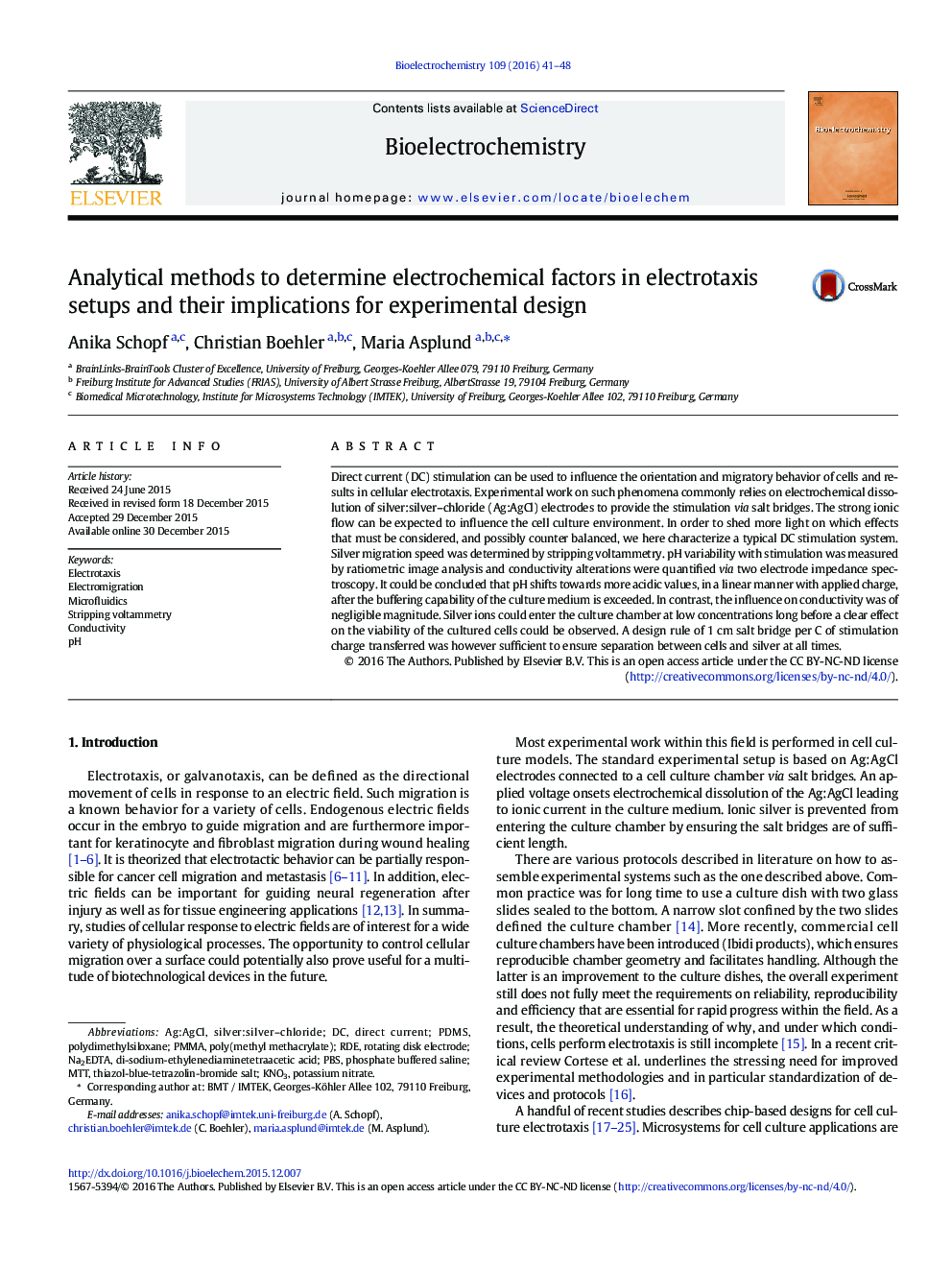| Article ID | Journal | Published Year | Pages | File Type |
|---|---|---|---|---|
| 7704962 | Bioelectrochemistry | 2016 | 8 Pages |
Abstract
Direct current (DC) stimulation can be used to influence the orientation and migratory behavior of cells and results in cellular electrotaxis. Experimental work on such phenomena commonly relies on electrochemical dissolution of silver:silver-chloride (Ag:AgCl) electrodes to provide the stimulation via salt bridges. The strong ionic flow can be expected to influence the cell culture environment. In order to shed more light on which effects that must be considered, and possibly counter balanced, we here characterize a typical DC stimulation system. Silver migration speed was determined by stripping voltammetry. pH variability with stimulation was measured by ratiometric image analysis and conductivity alterations were quantified via two electrode impedance spectroscopy. It could be concluded that pH shifts towards more acidic values, in a linear manner with applied charge, after the buffering capability of the culture medium is exceeded. In contrast, the influence on conductivity was of negligible magnitude. Silver ions could enter the culture chamber at low concentrations long before a clear effect on the viability of the cultured cells could be observed. A design rule of 1Â cm salt bridge per C of stimulation charge transferred was however sufficient to ensure separation between cells and silver at all times.
Keywords
Related Topics
Physical Sciences and Engineering
Chemistry
Electrochemistry
Authors
Anika Schopf, Christian Boehler, Maria Asplund,
